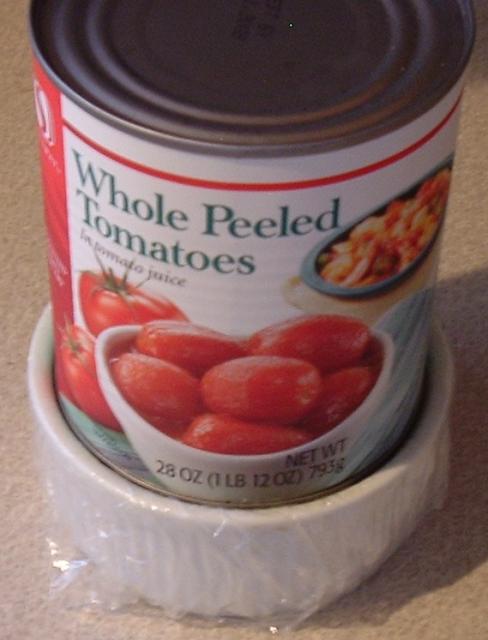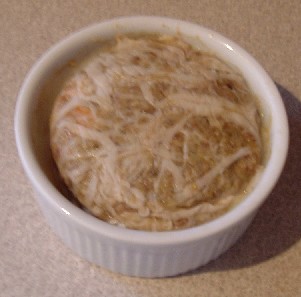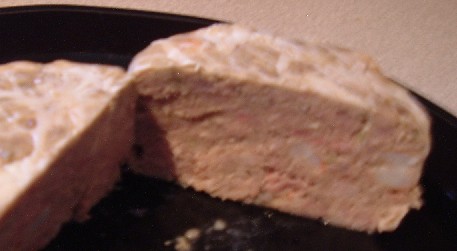
Dave Weinstein
-
Posts
230 -
Joined
-
Last visited
Content Type
Profiles
Forums
Store
Help Articles
Posts posted by Dave Weinstein
-
-
My sister is going to be in town very briefly, and won't be getting in until fairly late on a Friday.
Are there any top flight restaurants in Seattle itself that seat late (i.e. 10-11pm, depending on flight delays)?
-
We went last night. The food ranged from good (Szechuan Whole Fish, Green Onion Pancake) to incredible (Chong Quin Chicken).
Depending on your personal spicy threshold, you probably want to dial down the level on some dishes. That being said, I'm sorely tempted to get the chicken again for lunch (even though it isn't on the lunch menu).
-
Can anyone who has one give their opinions of the Big Kahuna Wok Burner? Also, what wok do you recommend to use with it (given that it has to handle that level of heat)?
-
Last week, I picked up some frozen duck breasts to try my hand at the Duck Prosciutto again (first batch last year ended Not Well), and to try out my new aging fridge.
Since I had four breasts in the package, I decided to try an experiment with two of them. I put them in the basic cure, added maple syrup, and treated them like I would pork belly. Today, I took the resulting breasts, let them dry a bit in the fridge, and then hot smoked them over applewood (using the Lil Smokey for the smoking).
The result is a smokey, meaty bacon flavor, with a nice chewiness to it. This batch is slightly over salted (in the future, I'd do 5-6 days in the cure instead of 7, since the meat is so much thinner), but if you put it up against something else (like say, a tomato) it works perfectly.
This would make a nice alternative for people who either can't get pork belly or want a bacon that isn't pork based, and a nice occasional change of pace for the rest of us.
-
Just ordered those cold smoking sticks; looks like an easy way to cold smoke in the Weber.
I'm trying a hot-smoking experiment next week; I've got two duck breasts in a bacon style maple cure, when they cure, I'm going to hot smoke them with apple wood (in the mini-smoker), and see how that works out.
-
Dave, that paté seems fantastic. How many cups of paté did you create? I'm trying to figure out the right sized mold.
A standard batch (i.e. starting with around 2lbs of meat) gives a bit over four of the 12oz molds worth of pate.
I take what remains and roll it in plastic wrap and poach it.
I suspect, with a bit more extras folded in (I'm thinking chinese sausage, and possibly some sichuan pepper bacon for the next batch), I could go to a ffith ramekin.
Note to self. Buy fifth ramekin.
-
I get it -- you are brave. Most of the home cheesemaking books warn against making raw milk cheese. Since most of US has been having a heatwave, I guess that is a critical issue.
I suspect the books are in many cases worried about litigation.
It isn't a matter of bravery, I'm just careful.
I use very high quality milk, in a clean environment. The milk is fresh, and I introduce a large quantity of the micro-organisms that I want into it, and I'm careful with time and temperature.
All that being said, I would not serve it to children, the elderly, pregnant women, or anyone with a weakened or compromised immune system. It's almost certainly safe, but...
-
I'm watching the weather forecasts, because we're right on the cusp of "safe for making cheese" weather.
Oh, you must expand on that statement! What is NOT safe cheesemaking weather, pray tell? Can it be too hot? Or too cold? Or too moist? I'm terribly curious...
p.s. You are paying more for your goat milk than I am! I'm impressed and probably should suck up and just buy more...
It's raw milk. I want the temperature to be in the 60s or below for the entire 30 hours or so it will take to make the cheese.
-
You should be able to get the Rainhaven milk; I know it has been available in the Pike Place market before. Contact Debbie over at Rainhaven for where to buy information.
I'm watching the weather forecasts, because we're right on the cusp of "safe for making cheese" weather.
-
Dave makes me jealous and I may have to start hunting around for a less-expensive supply of goat milk.
The milk I buy is of excellent quality, but it is definitely not inexpensive. It runs around $9/half gallon, or $16-$17/gallon.
Since I'm making a fresh raw milk cheese, I'm far more picky about the quality than the price.
--Dave
-
I regularly (except when the temperature is too hot) make a raw milk chevre.
This is a fresh raw milk cheese. I don't have a particular problem with it, but I do warn people before offering them any.
I buy my milk from Rainhaven Goat Dairy; among other thing she posts her monthly test results on the milk. If you are doing a fresh raw milk cheese, you should be very particular about your supplies.
I make it in gallon or half gallon batches, depending on what I expect to be using.
Step 1: Heat the milk in stainless pot up to 86 degrees Fahrenheit. Remove from the heat, add the culture packet, mix well. Cover the top of the pot with plastic wrap. I use the Chevre culture from New England Cheesemaking.
Step 2: Let the cheese age in a room at between 60 and 70 degrees for between 16 and 24 hours.
Step 3: Boil the cheese muslin. Pour the curds into a collander lined with the muslin. Pull the muslin over the curds (so there are no exposed curds), and let drain for 4-6 hours, in a room between 60 and 70 degrees.
Step 4: Squeeze the last of the whey out of the cheese, and place the cheese in a glass pan.
Step 5: Add salt and spices. By default, I do it in one step, with 1/2 T of Truffle Salt per half-gallon of milk. Blend, cover, and refridgerate. The flavor will be infused in 2-4 hours.
Step 6: Wash and then boil the cheese muslin again, before putting it away for the next batch.
I trust the resulting cheese for up to two weeks, if kept well refridgerated.
Other notes: It is illegal to import or sell fresh raw milk cheeses.
-
I assumed, correctly or incorrectly, that the whole scene with the angry customer was scripted.
-
Country Pate with Vietnamese Flavors
This is a nice light country pate I made today, using the recipe in the book as a template. I wanted something I could use to make Vietnamese subs, especially since the heat is still oppressive. It uses pork, shrimp, and duck eggs, although hens eggs can also be used.
For ease (and since 4x$4.00 is a lot cheaper than a nice terrine mold), I use 12oz Ramekins for making pate. These are the perfect size for a tomato can to be used as a weight:

I use caul fat to wrap the pate, so that it ends up in a nice tight shape and is easy to remove.

And finally, a somewhat blurry cross-section:

The white chunks in the cross section are pieces of shrimp.
-
Country Pate with Vietnamese Flavors
This is a light country style pate, based on the recipe for Pate de Campagne from Charcuterie: The Craft of Salting, Smoking, and Curing.
If you do not have the book referenced, I strongly recommend getting it, as this recipe assumes knowledge and experience with the preparation of pates which can be found in the book.
Pork
- 2 lb Pork Shoulder (or boneless country spare ribs)
- 2 T Fish Sauce
- 2 T Carmelized Sugar
Spices
- 4 oz Pork Liver
- 50 g Onion (Diced)
- 6 T Lemon Grass (Minced)
- 25 g Garlic (Minced)
- 30 g Ginger (Minced)
- 23 g Kosher Salt
Shrimp
- 6 oz Raw shrimp
- 1 T Sugar
- 1 T Lime juice
Panade
- 1/2 c Heavy Cream
- 2 T All-purpose Flour
- 2 T Calvados (or other brandy)
- 2 Duck Eggs
Chop up the pork, and combine it with the fish sauce and carmelized sugar, and then place in the freezer for at least 30 minutes. If they are not already frozen, place the grinder blade and other components in the freezer at the same time.
Combine the incredients for the spice mix into a single bowl and refrigerate. Yes, this implies that pork liver is a spice.
Roughly chop the peeled shrimp, and place in a bowl with the lime juice and sugar, and refrigerate.
Combine the ingredients for the panade (you can substitute hens eggs if you don't have duck eggs available, but only use two), blend, and likewise refrigerate.
Grind the pork with the coarse die, reserving the liquid remaining in the bowl in which the pork was chilled.
Mix 1/3 of the ground pork with the reserved liquid and the spice mix, and grind with the fine die.
Drain the shrimp, discarding the lime juice, and add to the ground mixture.
Paddle the mixture together, adding the panade, until the panade is fully integrated and the meat is "sticky".
Pour the meat into the mold or molds you prefer, place the mold in a water bath that rises up to about 75% of the side, and place in a 300 degree oven until the interior temperature is 150 degrees (about 1 hour).
Let the pate come to room temperature, then weight it down, and chill it in the refrigerator.
Keywords: Appetizer, Intermediate, Pork
( RG1762 )
-
Raw milk cheeses.
Air cured meats.
They are all part of a "raw" diet.
-
For long term storage, a vacuum sealer and a good freezer. That's how I put my herbs by at the end of the season.
-
Nana Carmela's, north and east of Seattle, in Monroe. Make sure you sit at the Chef's table. And bring both an appetite and an expectation that you are going to be bringing leftovers back with you.
If you wanted to do it as a day trip, spend the day in the Snoqualmie valley (Monroe is at the north end of the valley), going up to the falls, end ending up at Nana Carmela's for dinner.
(They are only open for dinner, Wednesday-Saturday)
-
I have an electric radiant slide in range, that I'd really like to replace with something better.
The only thing I've seen so far in the states are either cooktops or portable elements.
Does anyone know of any forthcoming induction ranges, and if not, can you replace a range with a cooktop/oven pair in the same slot that used to hold a range?
-
I went a long time not thinking about "summer cooking" as a special thing.
When I lived in Austin, I had air conditioning, and big power bills.
When I lived in Denver, the temperature dropped like a stone after the sun went down.
When I lived in Virginia, I had air conditioning, and big power bills.
When I lived in North Carolina, I had air conditioning and massive power bills.
Now that I live in Washington, I have no air conditioning, and very reasonable power bills. But when it gets hot (which it is slated to do again this weekend), it's time for alternatives.
We had a house session during the last unpleasant weekend in late June, and in the afternoon, in direct sun, I'm busy frying homemade sausage in a cast iron skillet...
-
Dave, the pate will continue to improve with time. I left mine for a week before cutting it, and it was delicious. Two weeks later, when we ate the last scrap, it was 95% as delicious as after a 1 week cure. Let it rest, if you can.
Sounds like grounds for experimentation. One to open up in the next day or so, one when that is done, and I think the other two will go shrink wrapped into the deep freeze for future use.
-
Fortuitous Find of the Weekend: 28oz tomato cans are the perfect size to sit on top of pates in 12oz Ramekins.
I haven't cut into the individual pates yet, but I have sampled the leftover bit that I poached (and I brought that for lunch today).
Recipe: Pate de Campagne from the book, with duck eggs instead of hens eggs.
Notes so far: Reduce the parsley for the next batch. That's about it.
-
I was planning on a disk of tin foil and pie weights. I guess the question is, should I try to somehow remove the rendered fat before weighting it and cooling it?
-
The pate I just did was lined with caul fat. Granted, I did it in a terrine pan, but the caul really did hold it together. The only reservation I'd have about using caul in a ramekin is that it's mostly fat, and that fat renders, and your pate will be sitting in a fat puddle. Upside - it should come out easily. Downside - might need a bit of patting down so as not to be too greasy after it comes out.
Should I pat it down before or after the cool-down in the fridge?
-
So, I'm going to make some Pate this weekend. I'm planning on making it in 12oz ramekins, and I was thinking of lining it with caul fat. Does anyone know if this will give enough hold that I can pop the finished pates out of the ramekins intact?

Restaurant Recommendations (Friday, Late)
in Pacific Northwest & Alaska: Dining
Posted
I've been asked to look for a good seafood specialty restaurant that could seat us at 10pm...